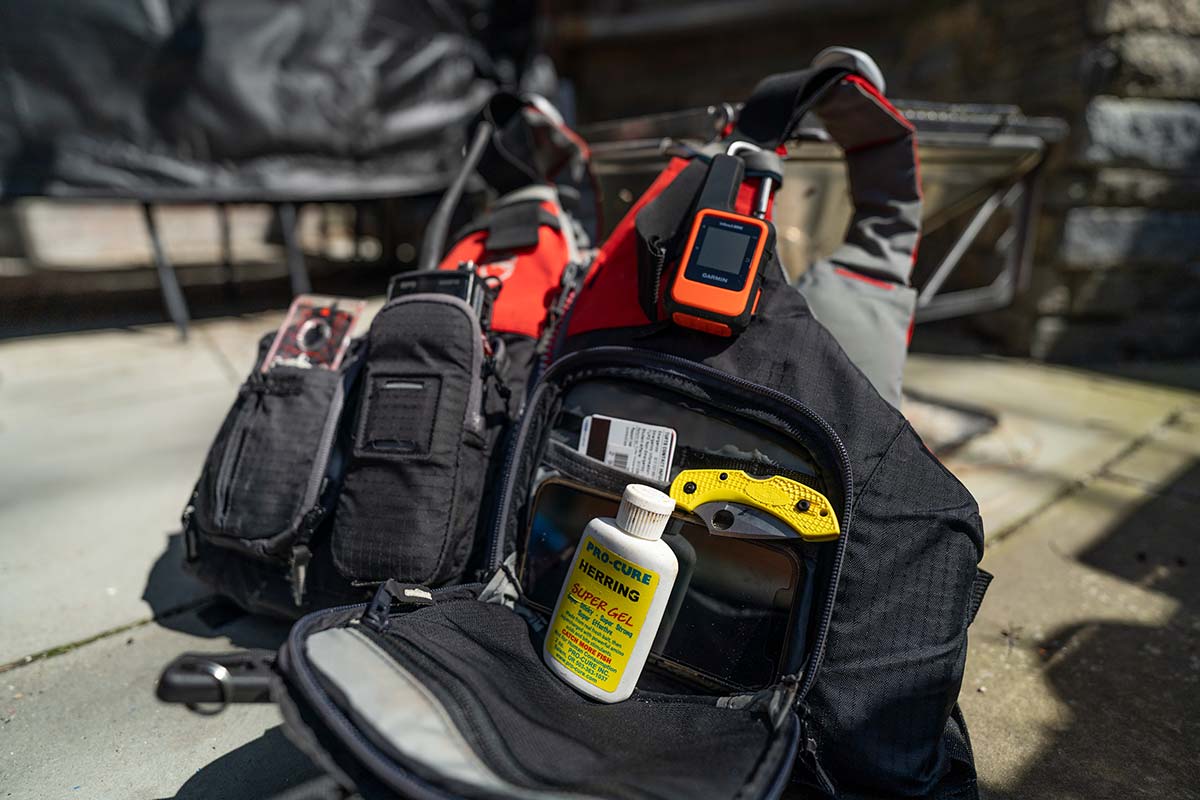
Know the USCG rules so you can enjoy a worry-free fishing trip on your boat or kayak.
As a boater or kayaker, you’re probably familiar with the basic premise of Personal Floatation Devices (PFDs): they help keep you afloat in case of an accident on the water. However, it’s worth taking a deeper dive. Understanding the differences between the five types of PFDs can expand the weather conditions you feel comfortable fishing in and keep you safer on the water.
Type I PFDs
Type I PFDs (offshore lifejackets) are designed for offshore or rough water use. They have a minimum of 22-pounds of buoyancy and the flotation is arranged so that it will be able to keep even an unconscious person’s head above the water.
Advantages: It keeps you afloat in rough water without using much of your own energy. If rescue will take a long time, as it can in bad conditions, this will keep your head above water for the longest amount of time.
Disadvantages: There are a limited number of options on the market. They are the most bulky and restricting PFD.
Who is it for: The solo-boat fisherman that tries to fish every opportunity. If you’re chasing tight weather windows or looking for a pre-storm bite, you never know when the forecast will be a few hours off.
Type II PFDs
Type II PFDs (Near Shore Buoyant Vests) are designed for general inshore boating. They have a minimum of 15.5-pounds of buoyancy and are also intended to keep an unconscious person’s head above the water, although only in calm conditions. Advantages: These are very affordable PFDs. You can purchase a few and stay in compliance with the law. These are perfect if you want to bring a few friends or family on the boat occasionally. There are very compact inflatable versions for those who prefer to keep their PFDs on the whole time they are on the boat.
Disadvantages: You’ll still have to tread water in rougher seas to keep afloat. This limits their offshore safety as rescue may take a longer time.
Who is it for: If you spend most of your time inshore fishing in reasonable weather, these should do the job at a reasonable price, for both kayakers and boaters.
Type III PFDs
Type III PFD (Flotation Aids) are an extremely popular choice for kayakers. They have the same minimum buoyancy requirements as Type II PFDs but you can’t rely on them to keep your head above water if you fall unconscious.
Advantages: There are many models that are specifically designed for kayak fishing. These models have pockets to hold leader, terminal tackle and even a VHF radio. They’re also the most comfortable to wear all day in a kayak seat.
Disadvantages: Boaters are one of the biggest risks for kayakers, and collisions are very likely to knock you unconscious. This type of PFD might not be able to flip you upright in that situation. You’ll also have to tread water to keep afloat in rough seas.
Who is it for: The ergonomics and gear storage features make it a great fit for kayak anglers and those fishing from jet skis.
Throwables
Type IV PFDs (Throwable Devices) are required on boats above 16 feet and also have a buoyancy of 15.5 pounds. These are intended to be thrown to an individual who has fallen overboard.
Type V PFDs
Type V PFDs (Special Use Life Jackets) are as the name suggests, for special uses like white water rafting, rescue operations, or sea kayaking. These generally will not satisfy USCG lifejacket requirements unless used for the activity stated.
Who is it for: These are not your standard fishing lifejackets, but if you are a solo kayak angler that goes out in tight weather windows, I recommend looking into a sea kayaking PFD. There are models that reach Type I levels of buoyancy but are have features similar to a kayak fishing Type III PFD. I’m currently shopping for one to supplement my Type III PFD.
What Are Your Risks?
Even though you’ve just invested some time into learning about PFDs, we still want to avoid putting them to use! The majority of boating injuries and deaths each year are due to vessel operation (inexperience, intoxication, inattention, etc), followed by environmental conditions like rough seas or weather. Treat piloting a boat seriously and please watch out for kayakers. We’re hard to see once there’s a bit of swell and frequently fish the same places as boaters, even out front.




